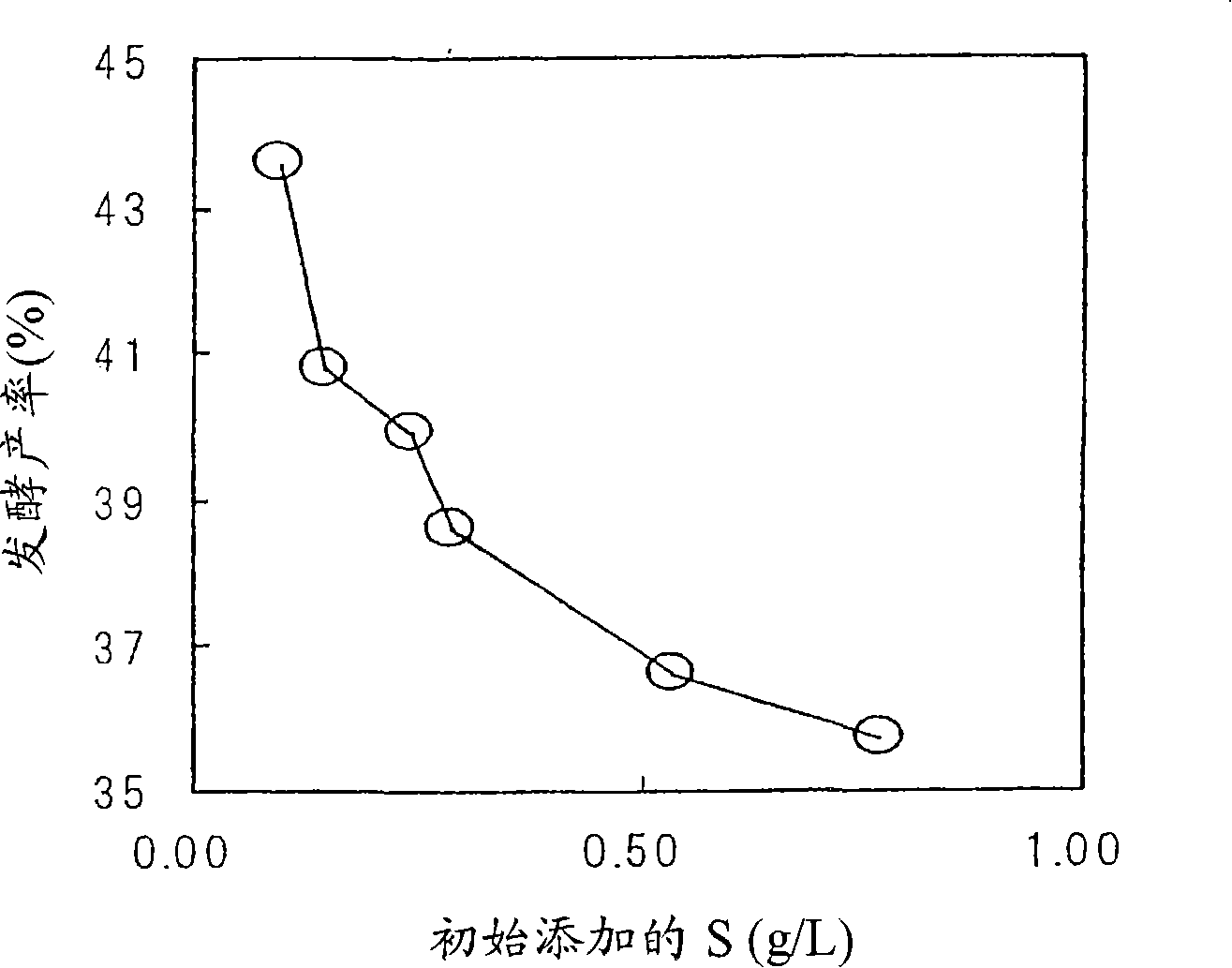Method for producing L-threonine
A technology of threonine and culture method, applied in the direction of animal feed, additional food elements, animal feed, etc.
- Summary
- Abstract
- Description
- Claims
- Application Information
AI Technical Summary
Problems solved by technology
Method used
Image
Examples
Embodiment 1
[0106] Example 1: Effect of Adjustment of Initial Sulfur Addition in Fed-Batch Culture
[0107] First, in fed-batch culture, the effect of limiting sulfur in the main culture initial medium to a predetermined concentration or lower during L-threonine production was examined.
[0108] Cultivate the VKPM B-5318 strain on LB agar medium plate (10g / L tryptone, 5g / L yeast extract, 5g / L NaCl, 15g / L agar) containing 20mg / L streptomycin sulfate at 37°C 24 hours, scrape off 1 / 10 of the cells on the plate from one plate and inoculate into 50 mL LB medium containing 20 mg / L streptomycin sulfate (10 g / L tryptone, 5 g / L yeast extract, 5g / L NaCl), at 40°C and 144rpm for 6 hours seed culture.
[0109] After completion of the seed culture, a seed culture medium in a volume equivalent to 16% of the volume of the main culture medium was inoculated into a 1-L small fermenter containing 300 mL of the main culture medium, and cultured at 40° C. and pH 7.0. The composition of the main culture me...
Embodiment 2
[0125] Example 2: Effect of adjustment of sulfur in the feed medium in fed-batch culture
[0126] First, in the same manner as in Example 1, the VKPM B-5318 strain was placed on the LB agar medium plate containing 20 mg / L streptomycin sulfate (10 g / L tryptone, 5 g / L yeast extract, 5 g / L L NaCl, 15g / L agar) at 37°C for 24 hours, scrape off 1 / 10 of the cells on the plate from a plate, and inoculate 50 mL of LB culture containing 20 mg / L streptomycin sulfate in a baffled flask Seed culture was carried out at 40° C. and 144 rpm for 6 hours in medium (10 g / L tryptone, 5 g / L yeast extract, 5 g / L NaCl).
[0127] After completion of the seed culture, a seed culture medium in a volume equivalent to 16% of the volume of the main culture medium was inoculated into a 1-L small fermenter containing 300 mL of the main culture medium, and cultured at 40° C. and pH 7.0. The main culture medium had the same components as those used in Example 1.
[0128] The culture was adjusted to pH 7.0 du...
PUM
 Login to View More
Login to View More Abstract
Description
Claims
Application Information
 Login to View More
Login to View More - R&D Engineer
- R&D Manager
- IP Professional
- Industry Leading Data Capabilities
- Powerful AI technology
- Patent DNA Extraction
Browse by: Latest US Patents, China's latest patents, Technical Efficacy Thesaurus, Application Domain, Technology Topic, Popular Technical Reports.
© 2024 PatSnap. All rights reserved.Legal|Privacy policy|Modern Slavery Act Transparency Statement|Sitemap|About US| Contact US: help@patsnap.com








